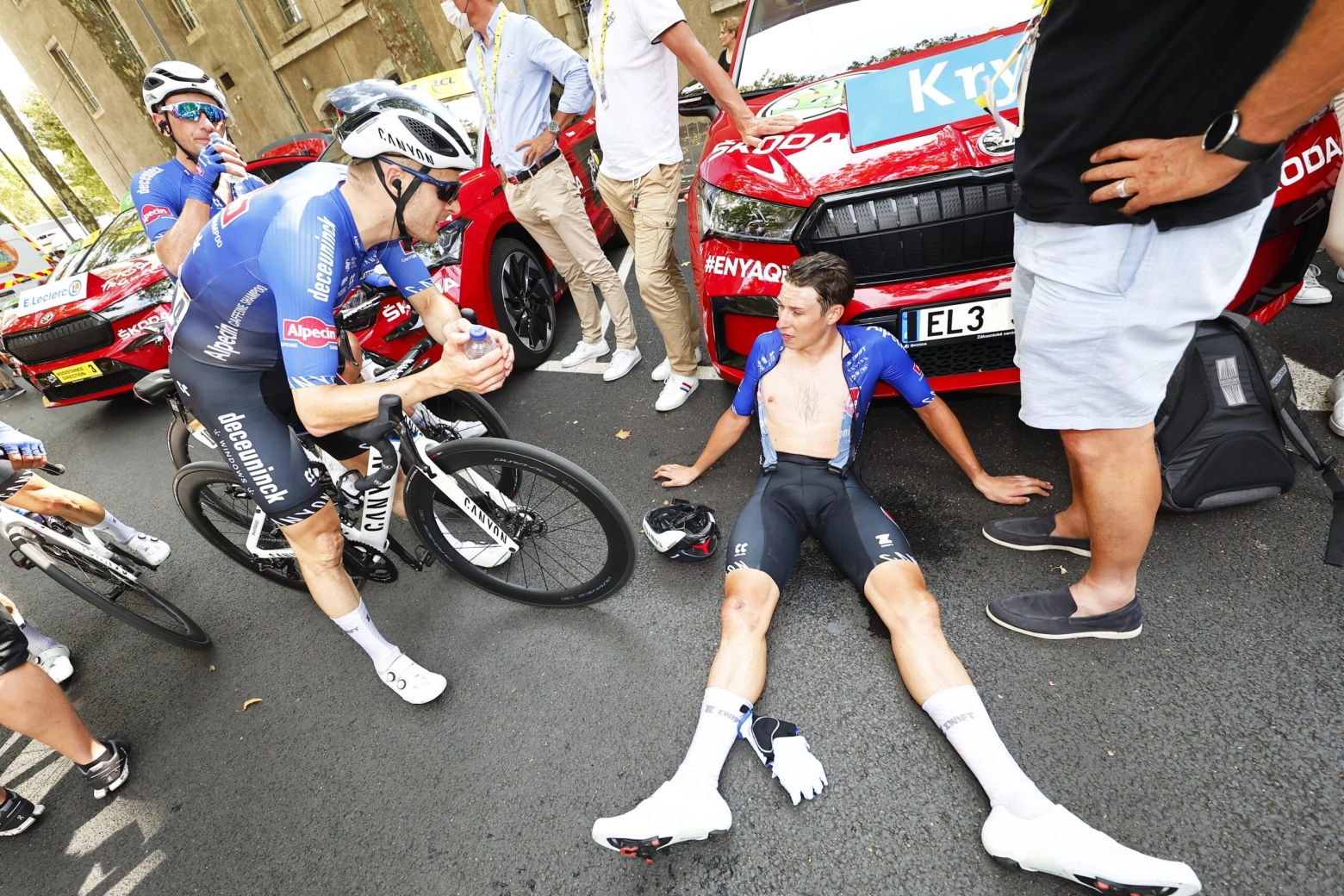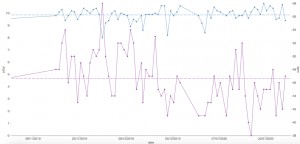Are you tired or overtrained? Learn to differentiate between the two
Fatigue on top of more fatigue, training and training, without resting much, and if we do, in a bad way… this could be understood as a way to improve for some and for others, a way to over-fatigue.
Those who think this last way are not foolish at all; on the contrary, they are intelligent and have a parasympathetic nervous system capable of warning us that something is not working with the training we are doing… have we overdone it?
Overtraining in cycling: symptoms, causes, and how to combat it
Here we will talk about sports overtraining, a pathology that we will describe as fatigue from effort, exhaustion, apathy, lethargy, and decline in otherwise healthy athletes; therefore, it can affect all types of athletes, regardless of age, sex, or sports level.
Overtraining and exhaustion are related
RECOMENDADO

Some reasons to stay away from the road in winter

S-Works: what does it really mean and where does Specialized's most exclusive label come from?

The best apps for cycling and mountain biking

Why wider tires in gravel are faster

Black Friday 2025 cycling bargains: save on Garmin, POC, Maxxis and more

Black Friday Garmin 2025: the ultimate guide to choosing your GPS at the best price
Some people believe that overtraining is a physical pathology, and that exhaustion is a psychological condition. This is not the case; they are intertwined, since most psychological states have a physical, biochemical, metabolic, and/or neurohormonal basis.

To understand why this overtraining occurs, we must understand one of the foundations of sports training: the effects of training are the body's response to stress from the workload.
If this stress is too high, the body cannot respond and adapt, and the consequence can be overtraining, which is fundamentally a catabolic response or degradation.
As athletes, we know that in cyclic sports like cycling or mountain biking, we must maximize our performance to achieve the best results in the main competitions planned for the season, requiring large volumes of training and high intensity at times to reach these goals, but… at what cost? What symptoms can I notice?
Main symptoms of overtraining
Here are some of the main and easiest symptoms to identify overtraining:
- Poor, inadequate, and non-restorative sleep
- Mood disturbances, including anxiety, irritability, loss of enjoyment, and sadness
- Poor performance with the same or increased training
- Vague or undefined physical discomfort
Causes of overtraining
Once we have defined its main symptoms, we ask ourselves: And how did we get here? Some of the causes of this could be:
- Excessive competitions.
- Attempts to follow a training plan when injured or ill.
- Inappropriate increase in training in an attempt to compensate for rest related to an injury or illness.
- Inadequate increase in training in an attempt to compensate for poor performance in competition.
In addition to these causes, we must consider that many of us have other external stress factors unrelated to training that can "help" us enter this catabolic effect, such as excessive work, a poor diet, personal conflicts… these are a stressful combination with a direct effect on our sports performance.

How overtraining occurs
We should highlight that the process of overtraining does not happen overnight; rather, there are phases that I will describe briefly and simply:
Overload phase, which is a normal phase of the training process when increasing the workload, trying to go beyond what you are used to in order to achieve an adaptation of your body. It is normal to experience short-term fatigue, but generally, one should feel well overall and achieve optimal results in competition.
Phase of "wanting to go beyond your limits," where you continue training with an abnormally high volume, or even increase it over a period of two weeks, no more, as your performance significantly declines in this phase, especially in training compared to competitions, where we still maintain our motivation high and "pull" us.
Intense overtraining phase, which manifests as chronic fatigue that becomes our "shadow." You feel tired upon waking, throughout the day, at work, and you struggle to sleep normally at night. Your adrenal glands are exhausted.
I would like to add here that in many of these cyclic sports, the best marks or sports results come from moments in the season where the athlete has had a long period of inactivity (from two to six weeks), with supercompensation at the training load level for the entire season, achieving those records.
How to prevent and act
Finally, as advice I give to cyclists I coach, if they fall into overtraining, the only logical option is rest, allowing for at least an absolute rest of 48 hours after the first symptoms of this process, after which a brief recovery session should be performed. If they still do not feel well, they should rest for another 48 hours and repeat the session, continuing this process until they recover better sensations.
Sometimes recovery from this process can take 5 to 8 weeks of some inactivity, losing a good part of physical condition.
To prevent these states, it is ideal to monitor various variables that can indicate this overtraining:
- Resting heart rate: a sudden increase in this without any illness or sleep disturbance could indicate that we are training in a fatigue phase.
- Heart rate variability: is equally or more important than the previous one; with this, we can control the sympathetic and parasympathetic tone of our body. If we see an excess of sympathetic tone, it could indicate a situation of overtraining (as long as this lasts for a long time, 10 days or more).
- Weight: a sudden alteration in this or difficulty in regaining our ideal weight could indicate some metabolic change in our body.
- Sleep: Sleep disorders that are not due to other causes such as family life, work, or other conflicts could be a possible indicator of overtraining.

Blue line, heart rate variability. High values indicate greater parasympathetic tone in our body; low values indicate more sympathetic activation.
Fuchsia line: Athlete's heart rate; lower values indicate greater adaptation to endurance training.
Therefore, training and monitoring it is important, but at the same time, recovery and the process of recovering from training loads during our cycling season is equally or more important! Keep a close watch!